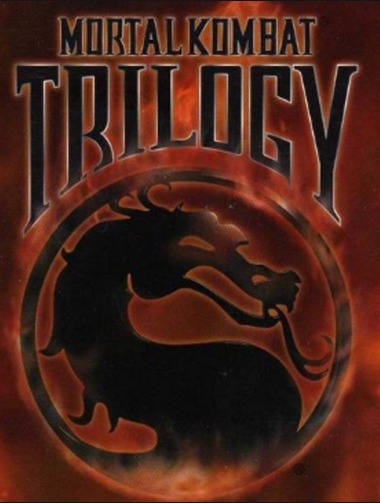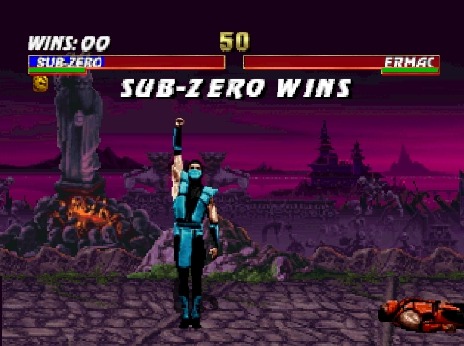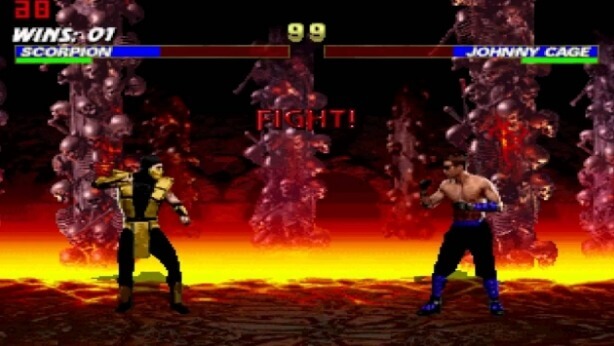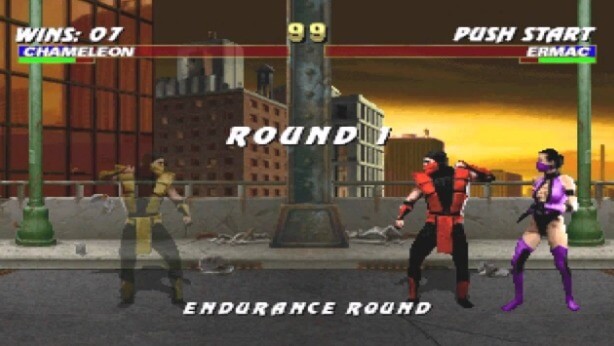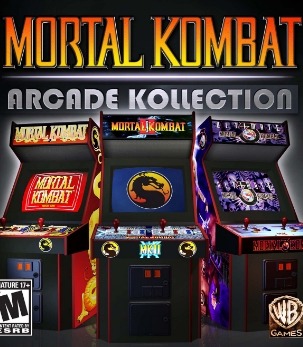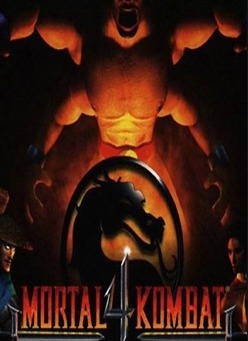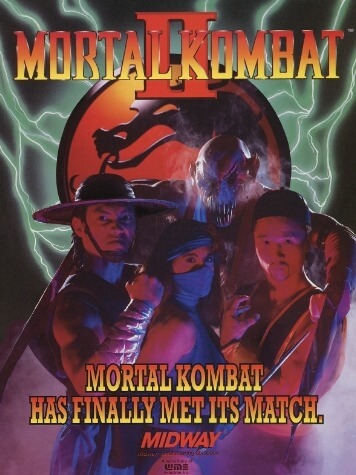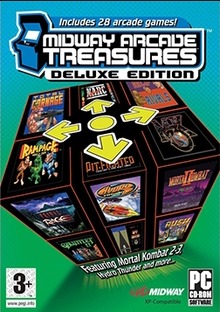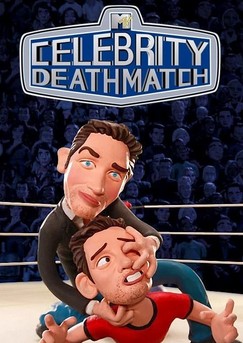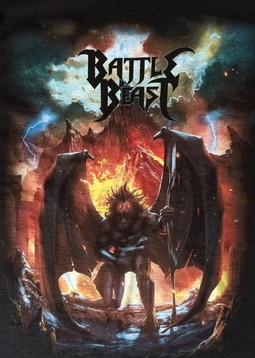All of the battle arenas that were featured in MKII, MK3, and UMK3 are available in MKT, but only four backgrounds from the original Mortal Kombat were featured (Courtyard, Goro's Lair, the Pit, and the Pit Bottom). The PC, PlayStation, and Sega Saturn versions lack The Hidden Portal and Noob's Dorfen stages from MK3, while the Nintendo 64 version lacks Kahn's Arena and the Bank from MKII and MK3, respectively.
Characters
Along with the Ultimate Mortal Kombat 3 roster, Trilogy adds Raiden and Baraka exactly as they appeared in Mortal Kombat II, with added running animations especially created for MK Trilogy. Johnny Cage was also added to the roster, this time portrayed by Chris Alexander (replacing Daniel Pesina, who was now legally at odds with Midway). He kept his moves from MKII except for the Split Punch, which was excluded since none of the characters from MK3/UMK3 had graphics for getting hit in the groin. Bosses Goro, Kintaro, Motaro and Shao Kahn are also playable characters from the start (except for the Nintendo 64 version where only Motaro and Shao Kahn are included and must be unlocked via a cheat menu). The PC, PlayStation and Saturn versions also contain alternate versions of Jax, Kung Lao, Kano and Raiden as they appeared in the first two titles. Contrarily to MKII Raiden and Baraka, these versions of the characters did not get proper running animations, and just feature a sped-up version of their walk animation when they try to run.
Two new secret characters appear as well, depending on the version of the game. Most versions have Chameleon, a semi-transparent ninja who rapidly switches between all the other male ninjas (Classic Sub-Zero, Scorpion, Noob Saibot, Human Smoke, Rain, Reptile, and Ermac) during combat. This character is playable by performing a special button combination. The Nintendo 64 version replaced him with a female character named Khameleon, who switches between the other female ninjas instead.
Reception
The game's critical reception has varied considerably, depending on the platform and publication. French magazine Super Power gave the Nintendo 64 version 91%, favoring it over the PlayStation version. The four reviewers of Electronic Gaming Monthly all gave the Nintendo 64 version their recommendation, citing the impressive amount of content and absence of load times, though Dan Hsu and Crispin Boyer found the graphics disappointing given the capabilities of the console. Both Boyer and Shawn Smith said the game had converted them to Mortal Kombat fandom. GamePro's Major Mike likewise praised the amount of content, as well as the accurate recreation of the arcade games' graphics, the addition of the Aggressor meter, and the application of new mechanics to characters from older games in the series. He complained that the game suffers from some slowdown and muted music, but concluded it "delivers with all the fighters, secrets, and carnage that made the series the phenomenon it is today." Jeff Gerstmann of GameSpot contradicted Major Mike, saying that the music is normal for a non-CD game and it is the sound effects (which Major Mike described as "arcade-perfect") that sound muffled. And while he complimented the Nintendo 64 version's large selection of play modes, he said it is conspicuously missing frames of animation from the arcade games, and that the characters left out of this version are "favorites". Peer Schneider of IGN contended that all of the audio aspects sound muffled. He said the Nintendo 64 version is a faithful conversion of the arcade games, though he compared it unfavorably to the PlayStation version. However, he held that the arcade games themselves are too aged to merit appearance on the Nintendo 64, referring to them as five years old (in actuality, Mortal Kombat 3 was barely a year old at the time, and even the oldest in the series was four years old). Mortal Kombat Trilogy was said to be a "particularly horrible game" among the Nintendo 64 library by Forbes, but was honored in Nintendo Power Awards '96, coming second in the category "Best Tournament Fighting Game".
Reviewing the PlayStation version, Major Mike criticized the overly difficult opponent AI and the unbalanced nature of the playable boss characters, and said the music tracks "sound like a 45 record played at 33 RPM." He nonetheless concluded it to be "a must for any fighting gamer's library", due to the responsive controls and large amount of content. Though Electronic Gaming Monthly never reviewed the PlayStation version of Mortal Kombat Trilogy, they ran a four-page feature comparing it to the Nintendo 64 version. Shawn Smith picked the Nintendo 64 version as the one to buy, saying that the major bugs in the PlayStation version outweigh the Nintendo 64 version's various shortcomings. The other three members of the review team all voted for the PlayStation version, particularly citing the additional characters and the lower price ($49.99 as compared to $69.99 for the Nintendo 64 version). They later named both versions runner-up for Fighting Game of the Year, behind Tekken 2.
Released at a time when the Nintendo 64's popularity was burgeoning and there were few competing games for the system, the Nintendo 64 version of Mortal Kombat Trilogy saw impressive sales figures. According to a later IGN retrospective, Mortal Kombat Trilogy "offered something no fan could ignore: It brought every character from the series into the fold, along with most of the levels, making for one massive game that had enough to please everyone. Sure, some of the balance went out the window with the massive cast, but it was a small price to pay to make the Mortal Kombat family whole again, and it gave fans the closure they needed for Midway to move on to Mortal Kombat 4."
